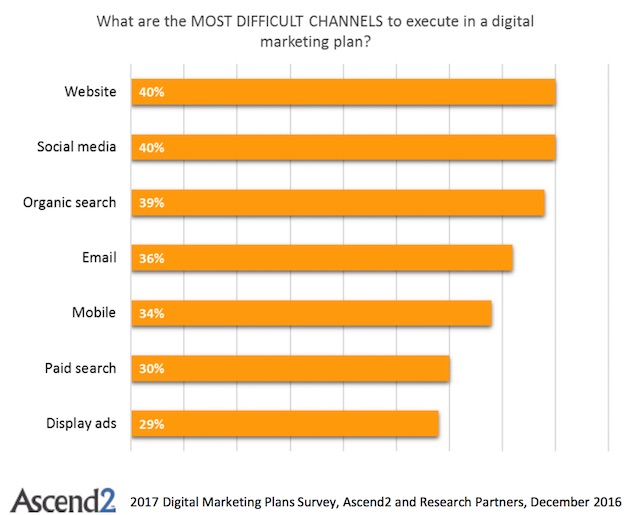
Marketers are beginning to see the connection between native advertising and content marketing. But are they actually assuming causality? While native advertising can be effective in some cases, it can also be unhelpful, sales-oriented, or too focused on the brand itself. This is not a good idea for advertisers or brands, so content marketing is a better option. Joe Walsh suggests that it's better if you own your media and audience.
Costs of content marketing vs. native advertising
When comparing the costs of content marketing versus native advertising, a higher budget may not always be the best option. Both methods are effective but not always equivalent. One advantage of content marketing is that it can generate a higher ROI, while native advertising can deliver guaranteed placement with big-name publishers. However, the overall costs of both options are higher. You must weigh the advantages and disadvantages of each method before you make the right decision.
When it comes to measuring the impact of your content marketing efforts, paid ads may be the best choice. You can increase organic traffic with content marketing and have a large number of links. Native advertising, on the other hand, can be more expensive and cost thousands of dollars. HubSpot has found that 93% businesses with marketing budgets over $1 to $5 Million are engaging in inbound advertising. This strategy offers a high return on investment with little risk.

Advertisements
Many similarities exist between content marketing and native advertising. Native ads are often labeled as sponsored content, rather than advertisements. This makes them more persuasive and users respond positively to messaging that follows editorial material. Content marketing is the opposite. It involves inserting ads into original content. Both strategies have their advantages and can be used for specific brands or businesses. Consider these examples of content and native advertising to help you choose which one is better.
Native advertising and content marketing share similar goals. The main difference between native advertising and content marketing is that native content doesn't give publishers or brands full ownership, which reduces its potential for lasting value. These strategies are often interchangeable. They do have some important differences. One example is that the effectiveness of content-marketing depends on the audience it targets. Native content can be a temporary boost for your brand if it is relevant to your target audiences.
Engagement metrics are a better indicator of overall brand advantage
Although pageviews can be a simple metric to measure the success of a content marketing campaign, they may not be the best. While increasing pageviews can increase traffic, it does not necessarily mean that the content is better. Engagement metrics like time on page views per session provide more detailed information about the overall effectiveness of a marketing campaign. Google Analytics, or any other tracking tool, can be used for measuring engagement.

Buyers today are able to interact with content at their own speed and move in and out throughout the buying cycle, thanks to digital media. It is therefore difficult to measure the number of buyers who have taken action on a particular piece of content. Engagement, however, is a sign of the overall content's value to your audience.
FAQ
Do I really need to hire an agency to do content marketing?
No! There are plenty of tools available online that make it easy to create high-quality content. A premium price is also a common charge for agencies.
Why should I do Content Marketing?
HubSpot says that the average person spends more than two hours a day on content consumption. That's a lot to spend time with content!
Are there any restrictions on linking to content from other websites?
Yes! This is called link building. It's a great way increase traffic to your site by linking to other sites. Be sure to only link to trusted sources.
How long will it take for content marketing to be started?
It depends on how large your business is. It is more difficult for smaller businesses to invest in content marketing right away. But it can pay big-time if your are willing to put in the time.
How is content marketing different from traditional advertising?
Traditional advertising focuses on getting attention, while content marketing focuses on providing value. Traditional advertising is often a waste of money because most people ignore it. However, content marketing can lead to much higher engagement rates.
Statistics
- Seventy-two percent business to business (B2B) (mailchimp.com)
- According to research compiled by Coschedule: Companies that publish 16+ blog posts a month get as much as 3.5x as much traffic as those that publish 0-4 posts a month. (criteo.com)
- We found that 40% of businesses don't have a documented strategy yet. (semrush.com)
- Content marketing produces 3X more leads per dollar spent. Content marketing costs 62% less than traditional marketing. (criteo.com)
- To further show the importance of this, 89% of people have stopped doing business with a company because of a poor experience. (neilpatel.com)
- Out of the 1,500 marketers we surveyed for our State of Content Marketing report, 78% who felt their content marketing strategy was exceptionally effective in 2021 had documented their strategy. (semrush.com)
- According to our research, 65% of companies with very successful content marketing in 2021 ran content audits at least twice a year. (semrush.com)
- An example of an overarching goal could be: "In 2022, we want to achieve a 20% increase in revenue created by organic content and generate 15,000 MQLs with a budget of $30,000." (semrush.com)
External Links
How To
Which are the most effective content marketing platforms?
Although no platform is perfect for every industry, most industries have at minimum one preferred tool. For example, Hubspot has been proven to increase conversion rates by almost 50%, so its software is widely used among marketers.
But not all tools are created equal. Some tools are better at tracking analytics, others enable easier collaboration between different departments, and others provide features such as A/B Testing that may increase your content-marketing ROI.
Before you decide on a platform, think about the following: What are their pros and cons? What will it do for me now? What about 2 years from now?
Here are the top 5 content marketing platforms according to Entrepreneur Magazine.
Marketo Content Studio: Content Marketing Platform #1
Marketo is an enterprise social media management software provider. Marketo offers a range of products and services that include CRM software, social publishing tools and analytic dashboards.
They also offer a content Studio that allows businesses access to a range of pre-made templates as well as graphics that can easily be customized.
This means you don’t need time to create new graphics and write unique content. Instead, you can instead focus on creating compelling content that speaks directly and effectively to your target audience.
Marketo makes it easy to include images and videos in your blog posts. This makes them more visually appealing and improves engagement with readers.
Marketo won't allow you to edit your image or video files.
Trello is the Content Marketing Platform#2
Trello can be compared to Kanban boards for project management. Both have task lists on which users can assign tasks and monitor progress.
Trello allows team members to create their own boards and assign them specific responsibilities. It allows you to share information among workers in a simple workflow.
However, unlike Kanban boards, Trello doesn't require any special software to run. Trello can be used on almost any device.
Trello is a great way to invite people and collaborate on projects without having access to sensitive data.
This allows you create a private group and give only the most essential details to those who must know them in order to complete a task.
Google Suite 3: Content Marketing Platform
Google has many products for business owners. Google's G Suite offers Google Docs and Sheets as well as Slides and Slides.
This application is not free. You will need to pay for each user individually. You can use them for multiple purposes with many plans starting at $5 per month.
If you wish to embed a link on another website in a document you will need to buy two licenses.
But if you want to just create one document, it is possible to do so free of charge.
Google tools can be integrated with other apps such as Gmail. This is a huge advantage. Google tools can be used to send documents links via email, and you can store data in Google Drive.
Hubspot Content Marketing Platform 4.
HubSpot is an extremely popular web-based marketing tool, which offers a variety of functionality.
The platform allows users to manage all aspects of their website, landing pages, blogs and other websites. Users can track conversions and create automated email campaigns.
HubSpot is also integrated with Salesforce and WordPress, meaning you can connect all three platforms.
One of the most valuable features of HubSpot is that it integrates with over 200 different third-party apps. This allows you automate tasks and generate reports using real-time data.
You won't have the ability to publish content directly via HubSpot. However, you can export it to many formats, such as HTML, PDF, Word.
HubSpot has a free version that allows you to test pricing. However, once you upgrade to a premium account, you have unlimited access.
HubSpot offers a variety of solutions, including a blog platform and an eCommerce solution.